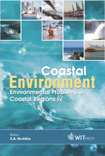EKO-Kaštela Bay Project – Environmental Project Management And Issues
Price
Free (open access)
Transaction
Volume
58
Pages
Published
2002
Size
810 kb
Paper DOI
10.2495/CENV020021
Copyright
WIT Press
Author(s)
V Androcec & B Ivancic
Abstract
EKO-Kastela Bay Project - Environmental project management and issues V. Androcec1, B. Ivancic2 1 University of Zagreb, Croatia 2Executive Manager, EKO Project, Croatia Abstract Due to extensive industrialization and increase in population numbers during the last fifty years, Kastela Bay has become one of the most polluted areas in the Mediterranean. Six years ago, the Croatian Government, in collaboration with the World Bank and European Bank, decided to invest approximately 150 million Euros in water supply and sewage systems that would address the sea quality issues in the whole Bay, such being the largest undertaking in the Adriatic, and among the largest ones in the Mediterranean. The separate describes the initial stages of the project named EKO-Kastela Bay, its structure, technical approach in addressing various issues, in particular those related to designing and environmental monitoring, as well as major implementation milestones with completion schedules. Resistance of locals concerning certain undertakings, such as submarine outfalls, which required special approach in engagement of professionals and a broader governmental management matrix, is also viewed in retrospect. Finally, the project financial flow is presented, as well as problems in balancing the funding sources in view of surplus loan proceedings during certain implementation periods. In conclusion, it is quite possible to protect the sea and improve its quality by implementation of grand-scale infrastructure projects in a country as developed as Croatia, but there exists a number of problems, from planning to funding arrangements and technical implementation in conjunction with the position of the population, who need to see for themselves the common welfare through such projects with concrete arguments of in situ measurements and by means of adequate modeling for demanding processes.
Keywords





